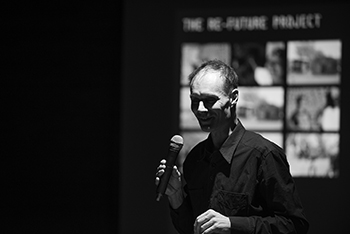Latest News Archive
Please select Category, Year, and then Month to display items
12 October 2020
|
Story Arina Engelbrecht
|
Photo Supplied
 Arina Engelbrecht from Organisational Development and Employee Well-being believes physical activity has a number of benefits for one’s health, including stress relief.
Arina Engelbrecht from Organisational Development and Employee Well-being believes physical activity has a number of benefits for one’s health, including stress relief.
Being physically active plays a big role in preventing the development of mental-health problems and in improving the quality of life of people experiencing mental-health problems.
Treatment for depression
Physical activity can be an alternative treatment for depression. It can be used as a stand-alone treatment or in combination with medication and/or psychological therapy. It promotes all kinds of changes in the brain, including neural growth, reduced inflammation, and new activity patterns are formed that promote feelings of calm and well-being. It releases endorphins – powerful chemicals in the brain that energise your spirit and make you feel good.
Physical activity can be very effective in relieving stress. Research in adults has found that physically active individuals tend to have lower stress levels compared to individuals who are less active. It also leads to improved sleep. When a person sleeps better and feels more rested, overall quality of life improves. They cope better with daily life stressors.
Reduce Alzheimer's risk
Regular physical activity can reduce your risk of developing Alzheimer's disease by up to 50%. It can also slow down further deterioration in those who have already started to develop cognitive problems. It stimulates the brain’s ability to maintain old connections as well as to make new ones.
A study asked people to rate their mood immediately after periods of physical activity (e.g. going for a walk/run, cycling, doing housework) and periods of inactivity (e.g. reading a book or watching television). Researchers found that participants felt more content, more awake, and calmer after being physically active compared to after periods of inactivity.
In conclusion, people who are physically active feel a sense of well-being, feel more energetic throughout the day, sleep better at night, have sharper memories, and feel more relaxed and positive about themselves and their lives.
“Being physically active not only changes your body, it changes your mind,
attitude, and your mood.” – Arina Engelbrecht
Arts and Science collaborate in creating sustainable futures
2016-03-16

Creating a future where living green is the status quo: Dr Keith Armstrong
Photo: Lihlumelo Toyana
|
In creating partnerships across disciplines, mankind gains a deeper understanding of how to create the future. This is the premise upon which Dr Keith Armstrong bases his research and experimental art. Dr Armstrong is an Australian Hybrid Media artist and a Senior Research Fellow at Queensland University of Technology in Australia.
Artists that make things happen
“My journey has shifted from an artist that makes things to an artist that makes things happen,” he said at the New Futures: Innovations in Arts and Science public talk recently at Oliewenhuis Art Museum. The talk, organised by the Johannes Stegmann Art Gallery, was part of a series of artistic projects presented by the Programme for Innovation in Arts and Development (PIAD). This initiative is spearheaded by the UFS and Vrystaat Arts Festival, kindly supported by The Andrew W. Mellon Foundation.
Dr Angus Hervey – an Australian writer, technologist and science communicator– was also a speaker at the event. Dr Hervey is a co-founder of Future Crunch, a platform for intelligent, optimistic thinking about the future. He strongly shares Dr Armstrong’s passion and viewpoints.
Dr Armstrong’s work is motivated by social and ecological justice. His non-traditional research and more than 60 artworks serve to evoke audiences to create sustainable futures.
Building the future
Dr Armstrong is in the process of making “things happen” in informal settlements across the Free State by means of his Re-Future project. The project brings together sustainability, community development, and creative action. It moves away from conventional art practices and instead offer a platform to rethink and therefore re-future our practices of sustainability.
The Re-Future project has been initiated through a collaboration between the Johannes Stegmann Art Gallery, the UFS Centre for Development Support (CDS) and Qala Phelang Tala (QPT) and the Vrystaat Art Festival.
According to Anita Venter, a lecturer at CDS and founder of QPT, empowerment is at the centre of the artist-initiated, yet community-controlled project. “It gives a new direction and new hope to the community,” she said.
For more information
Angela de Jesus, dejesusav@ufs.ac.za or +27(0)51 401 2706